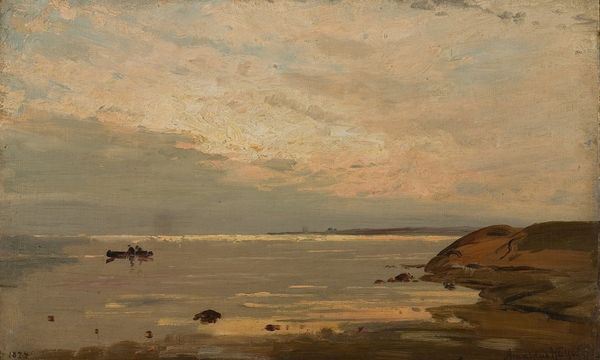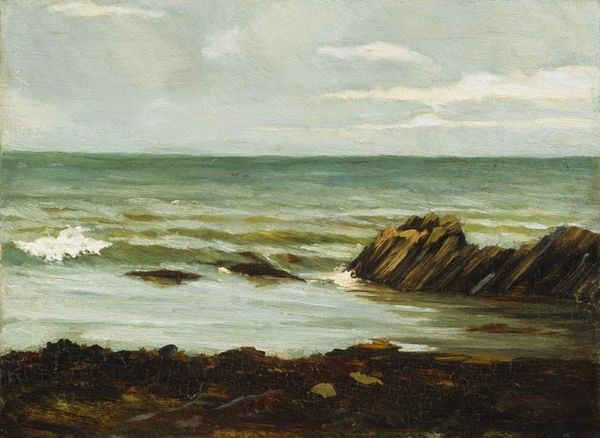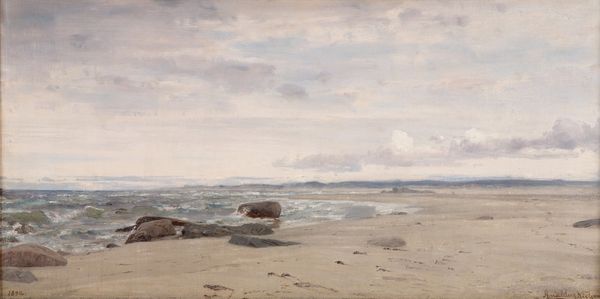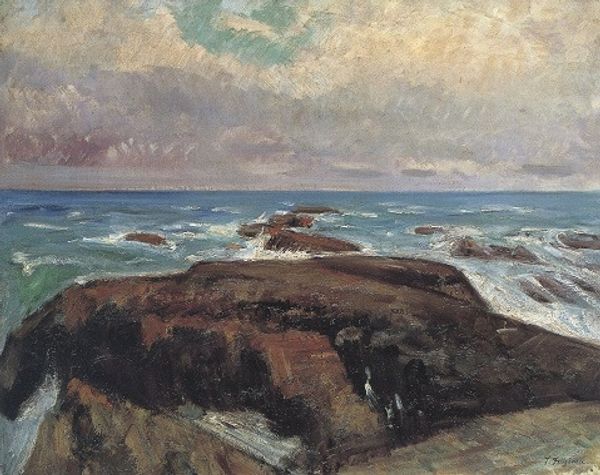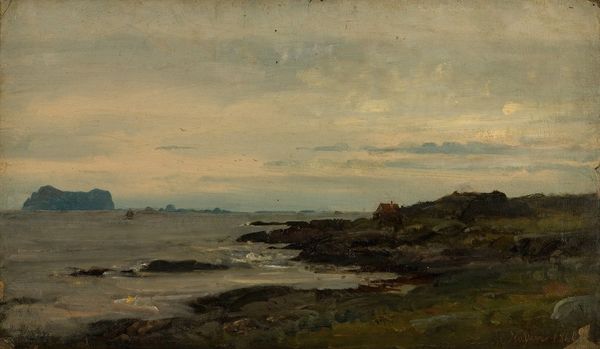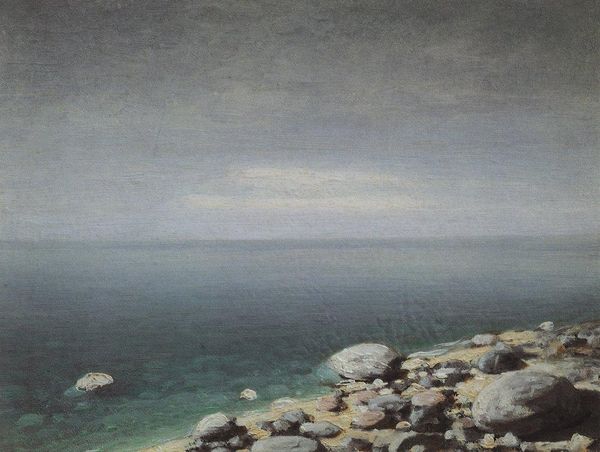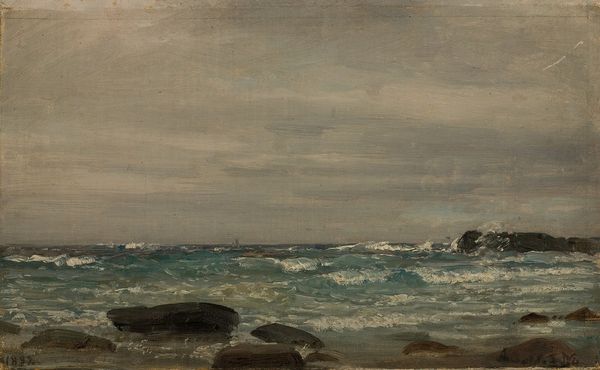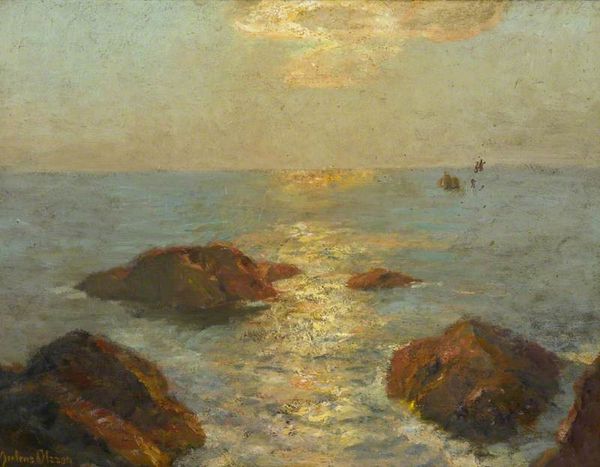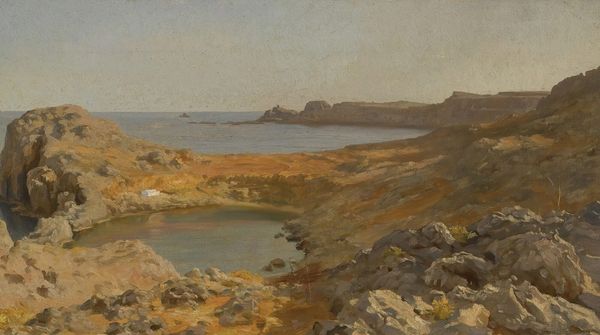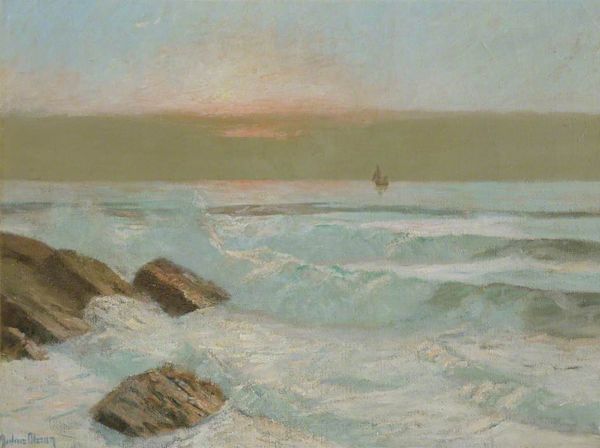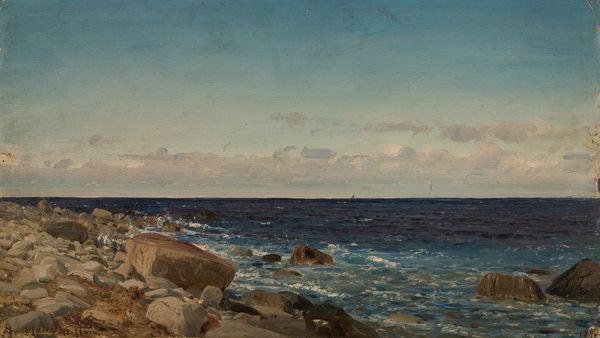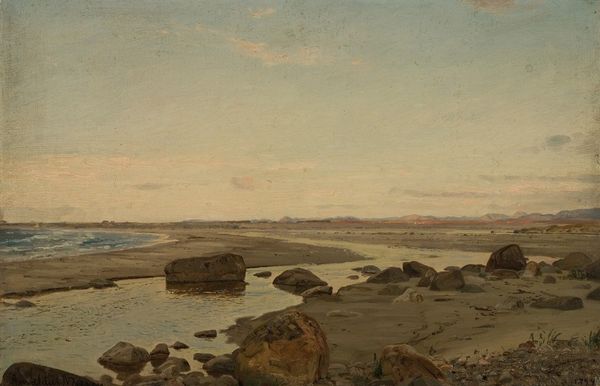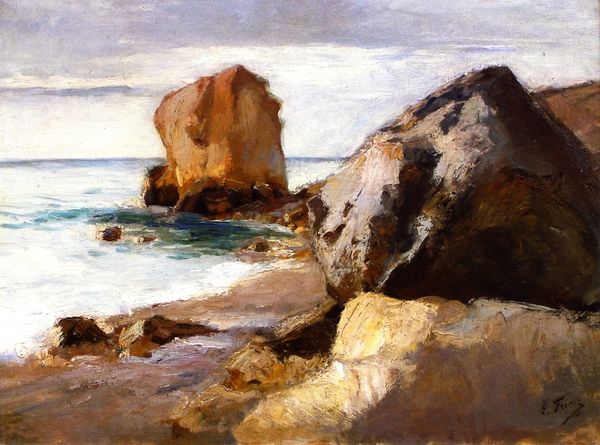
Copyright: Public domain
Editor: Here we have Carolus-Duran’s “Seashore at Audresselles,” an oil painting from 1917. It feels so calm and almost melancholic to me, with those muted greys and greens. What strikes you most about this work? Curator: I find it interesting to view this piece through the lens of its historical context. 1917…World War I was raging. Artists during this period grappled with representing a world steeped in violence and uncertainty. Given that, how might this seemingly peaceful seascape function as a commentary, perhaps an escape, on the realities of war? Editor: That's a fascinating angle! I hadn't considered the war's influence. Could it be a form of resistance, perhaps? A longing for simpler times expressed through art? Curator: Precisely! Consider also the Impressionists, Duran's artistic forebears. They challenged academic painting by focusing on everyday life and fleeting moments. Duran builds on that legacy here, depicting a seemingly insignificant scene, yet during wartime, this ordinariness becomes significant. It's a visual poem about perseverance, a return to something stable. The beach remains, despite all. Editor: I see what you mean. So the choice of subject matter, a quiet seashore, is itself a statement. Was Duran actively involved with the war? Did that impact the perception of his work during his time? Curator: That's exactly the right question! Duran didn’t serve but he, along with many other artists, actively engaged in fundraising and patriotic art production, contributing to the cultural narrative of the time. Editor: This makes me view the painting in a whole new light. Thank you, this really deepens my understanding of it! Curator: My pleasure. Examining art in relation to social and political movements makes it more interesting, doesn't it?
Comments
No comments
Be the first to comment and join the conversation on the ultimate creative platform.
